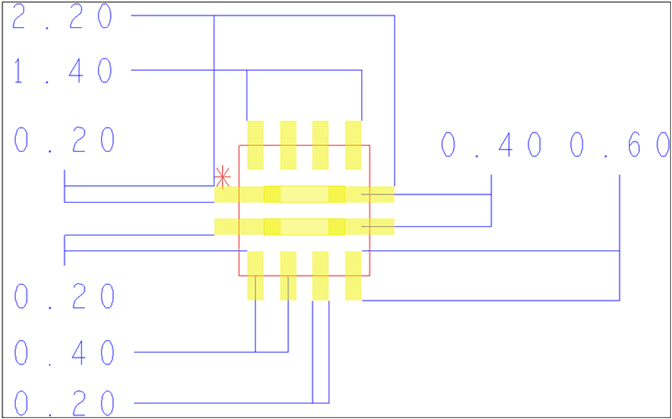JAJSDO5A August 2017 – September 2017 TUSB212
PRODUCTION DATA.
10 Layout
10.1 Layout Guidelines
The USB signal trace must not be broken when placing TUSB212. Thus, even with the TUSB212 powered down, or not populated, the USB link is still fully operational. To avoid the need for signal vias, it is highly recommend to route the High Speed traces directly underneath the TUSB212 package, as illustrated in the PCB land pattern shown in Figure 22.
Although the land pattern shown below has matched trace width to pad width, optimal impedance control is based on the user's own PCB stack-up. It is recommended to maintain 90 Ω differential routing underneath the device.
All dimensions are in millimetres (mm).
10.2 Layout Example
 Figure 22. DP and DM Routing Underneath Device Package
Figure 22. DP and DM Routing Underneath Device Package